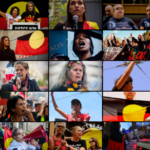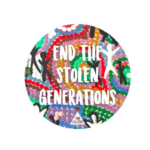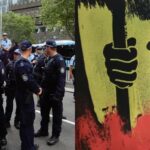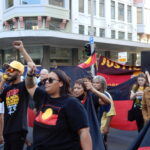Missing and Murdered First Nations Women: Senator Dorinda Cox on the Parliamentary Inquiry
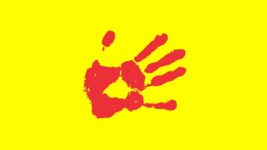
Greens Senator Dorinda Cox successfully moved a motion on 25 November to establish a government inquiry into missing and murdered Aboriginal and Torres Strait Islander women and children.
The Yamatji Noongar woman stated that there over 70 such cases nationwide right now.
The inquiry is set to consolidate the law enforcement data into the cases of missing and murdered First Nations women into a national framework, as the details of these investigations are currently “inconsistent and ad-hoc” across jurisdictions.
According to the senator, prejudices within law enforcement systems across this country are leading to the lack of urgency given to these cases. And she ought to know, as she served as an Aboriginal police liaison officer for the WA police in both Perth and Kalgoorlie.
As Cox stated last week, this inquiry is landmark, as it will delve into an often-hidden issue. She added that she first raised the proposal during her maiden speech, and these are the sorts of outcomes that having “grassroots senators and First Nations people” in parliament result in.
Hidden violence
The Deathscapes project investigation into Indigenous femicide outlines that the murder and disappearance of First Nations women is a problem throughout the settler colonial nations of Australia, the United States and Canada.
The Australian academic inquiry posits that violence directed towards First Nations women, the lack of consideration given to this issue by the settler colonial state, and its subsequent silencing are all a common product of the colonial project.
The study highlights the brutal rape of Lynette Daley in NSW, which saw prosecutors refuse to act against the perpetrators – two white men – for over half a decade. While the recent acquittal of the WA police officer who shot Yamatji woman JC is another example of this excused violence.
Senator Cox pointed to a 2014 Canadian inquiry into murdered and missing First Nations women in that country, which, after determining the extent of the problem over there, outlined four key steps forward for the nation to raise awareness of and address the issue.
MMIW (missing and murdered Indigenous women)
“The red handprint symbol on the mask that I wore into the chamber yesterday and that I hold up today is a symbol of the bloodied hand silencing the voices of those stories,” said Cox, as she flagged the inquiry during her first parliamentary speech.
The motion she tabled last week outlines that the senate investigation will look into all forms of violence perpetrated against First Nations women, policies that have proven to reduce such violence, as well as any effective actions that would serve to remove the systemic causes.
Sydney Criminal Lawyers spoke with Senator Dorinda Cox about the way these cases are being approached by law enforcement, the extent of the problem in this country, and why these murders and disappearances remain hidden from the wider public.
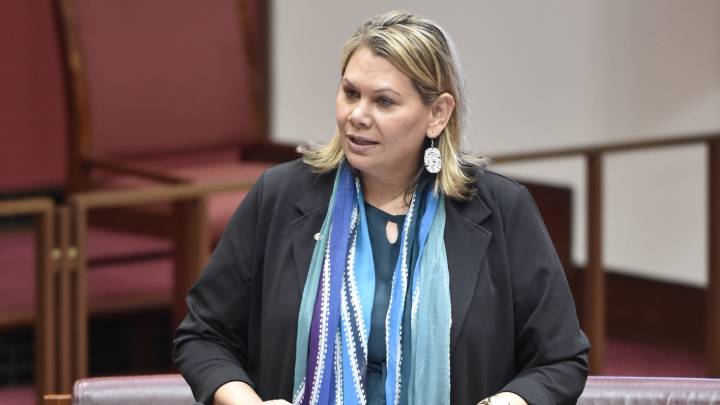
Firstly, Senator Cox, you tabled a motion in the Senate which led to the establishment of an inquiry into missing and murdered Aboriginal and Torres Strait Islander women and children.
Launching this inquiry was something you first rose as a priority in your mid-October maiden speech in parliament.
Why is this such a priority? And what’s the scope of the issue?
The common thread across the cases I’ve come across is that families feel unheard and ignored by the police and the justice system when their loved ones go missing.
I know of 76 cases of missing and murdered First Nations women across the nation.
We need to understand the systemic issues that lead to these women going missing or being murdered, so we learn how to prevent them – including the situations leading up to their deaths.
The issue of missing First Nations women and children remains widely hidden. Why is this the case?
As a former police officer, I saw how cases of missing and murdered First Nations women were treated differently to non-Indigenous women and children.
Systemic racism does exist and when we acknowledge it, we can start to address the issue that First Nations people face when they interact with the justice system.
Besides addressing law enforcement prejudice, what are some of the other key points that you want to see prioritised during the inquiry?
It’s also very important for us to understand the level of resourcing that goes into investigating cases of missing and murdered First Nations women.
Importantly, we also have to understand the systemic causes of violence experienced by First Nations women and children.
The issue with missing and murdered Indigenous women is also present in Canada and the United States, which, like Australia, are settler colonial societies. And this issue is often concealed in those countries as well.
What does this tell us?
This inquiry would be similar to the one our First Nations Canadian brothers and sisters had into the unacceptable rates of deaths of women. Their history is heartbreaking.
According to a 2014 report entitled Missing and Murdered Aboriginal Women: A National Operational Overview, more than 1,000 Indigenous women were murdered over a 30 year period.
The murder rate was almost six times as high for Indigenous women than non-Indigenous women.
On my trip to Canada in 2018, I met with the Native Women’s Association in Ottawa. During this meeting, First Nations women told me of the 582 cases that triggered their inquiry.
I heard from them directly the stories of families running fundraising activities to raise money for boats.
The boats would be used to go into the rivers to search for these women – yes, you heard me right, the families were doing this because no one was looking for them.
One of the key issues raised in this inquiry was the response and investigation by police in these cases, as it involved some appalling examples of the justification why not to conduct investigations to the same level of other Canadian people.
This tells me that this issue is not unique to Australia. It’s a worldwide issue. And Australia needs to address its racist past so we can all go forward together on a path of conciliation.
And lastly, Senator, the Legal and Constitutional Affairs References Committee inquiry into this matter is set to table its final report next June. What are some of the outcomes that you’re hoping will be forthcoming?
It would be inappropriate to determine the outcome of the inquiry before we clearly understand the issues.
But a strong national consensus on a pathway forward to addressing these issues is clearly a driving factor for the inquiry.


